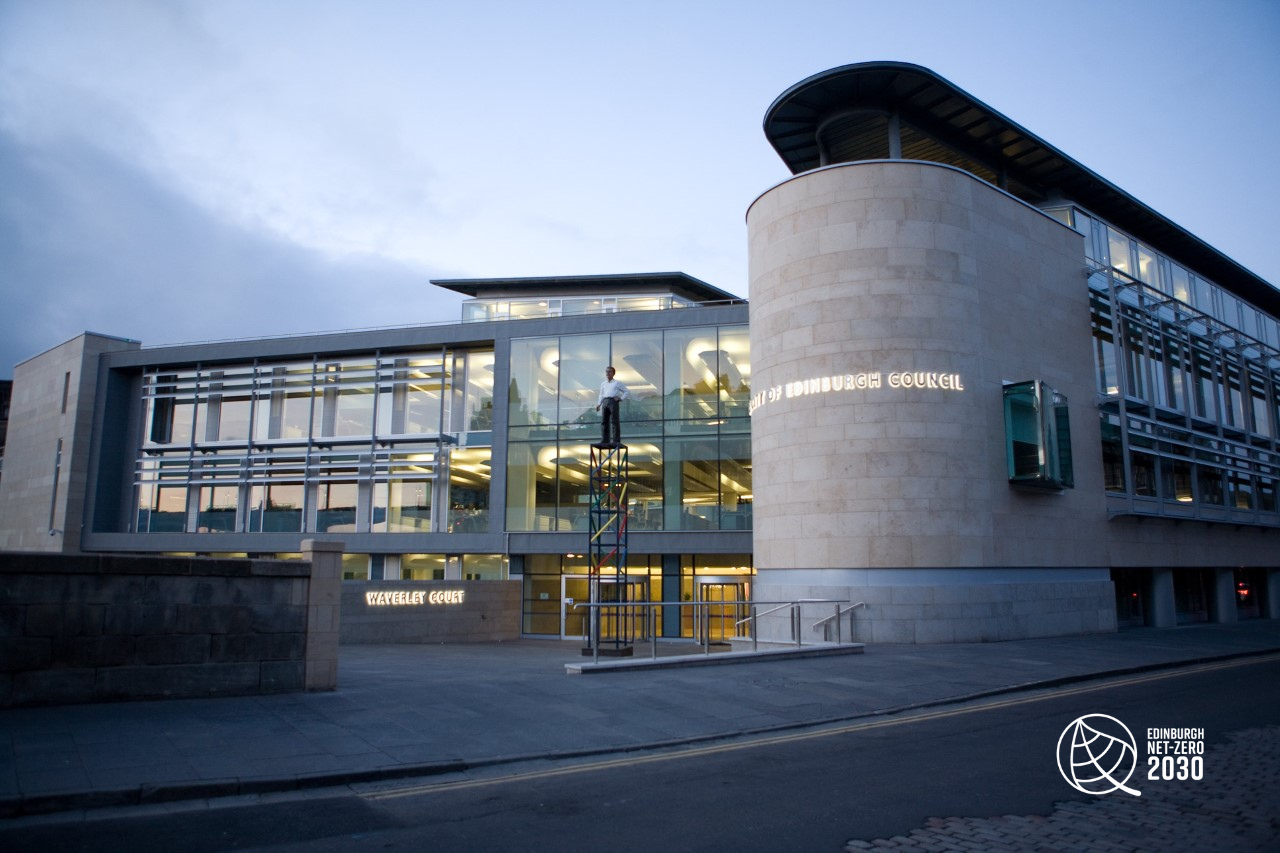The City of Edinburgh Council greenhouse gas emissions have continued to fall for the sixth year running – helped in part by the upgrading of LED street lighting across the city, and a drop in fleet emissions.
The findings, which have been released as part of the latest Public Bodies Climate Change Duties (PBCCD) report, reveal that Council emissions have been cut by 11% in the past financial year – supporting the Council’s ambition of becoming a net zero organisation by 2030.
The reduction, which also includes emissions from Edinburgh Leisure, is mainly thanks to a fall in electricity consumption, achieved through lighting or other energy efficiency upgrades, property closures during the pandemic and greening of the electricity grid. The upgrade in LED street lighting across the city also contributed to a third of the drop in overall electricity use. A decrease in the use of the heavy vehicle fleet and a drop in business travel during the lockdown also helped emissions fall.
In 2020-21, emissions from buildings made up 66% of the Councils carbon footprint. Meanwhile, emissions from waste totalled 9%, fleet 10%, business travel 1% and other energy consumption, such as street and stair lighting, alarms and traffic signals made up 14%.
The report will be considered by the Policy and Sustainability Committee on Tuesday 30 November, alongside the final Council Emissions Reduction Plan – which outlines the initial steps the Council needs to take to become a net zero organisation by 2030.
Leader, Councillor Adam McVey said:
“It’s fantastic to see our hard work paying off, cut our carbon emissions for the sixth year running. It shows that major programmes of work to support a greener, net zero council by 2030, such as making Edinburgh’s street lighting more energy efficient, is having a real positive impact on the organisation and the city.
“While achieving an 11% drop in emissions this year is a significant achievement that we’re looking to build on, we must not become complacent. We know that 2020-21 was a unique year, and some of the changed to how we worked during the pandemic have contributed to this drop.
“As we transition back into the workplace over the coming months, we need to build on our progress to date and bank some of the progress of changes made during the last year. By continuing to make our buildings more energy efficient and encouraging colleagues to use more active and sustainable means of travel for work where possible we can recover from the pandemic in the greenest way possible and keep us on the track to net-zero by 2030.”
As well as reporting on the Council organisational emissions, the PBCCD report also covers the action taken by the Council to get ready for the unavoidable impacts of climate change – such as flooding and heatwaves.
It highlights that there has been a large increase in adaptation and climate risk activity being embedded across Council services, policies and plans – including the creation of the Edinburgh & Lothians Strategic Drainage Partnership to spot and reduce flood risk in the city and work to identify risks and protect Edinburgh’s World Heritage site, historic buildings and coastal communities.
It also highlights the Council’s new sustainable procurement strategy, which was launched in March 2020. The new policy means that Council procurement activity now contributes to its compliance with climate change duties..
Depute Leader, Cammy Day added:
“The challenge we now face as a Council is how we maintain and improve on these reductions in emissions – which is why I’m delighted to see the publication of our Council Emissions Reduction Plan.
“By calculating the emissions impact of all of our activity and providing a clear plan for how we can cut our footprint, we can continue to make progress and build on our successes to date, helping to deliver environmental benefits along with wider health, economic and wellbeing benefits for everyone who lives and works in Edinburgh.”
The report is set to be discussed at the Policy and Sustainability Committee on 30 November.
Box Out:
Key stats from the report:
- 69% – fall in Council’s business travel emissions footprint – caused by lockdown.
- 2.3% – the total increase in household waste tonnage collected by the Council. This is due to citizens spending more time at home during and after national lockdowns.
- 25,300: The number of average UK household’s annual energy needs which can be covered by the electricity generated from Millerhill Energy from Waste plant.
- 52,810 – The number of energy efficient streetlights installed in Edinburgh to date (up to Friday 5th November). A further 2,190 lanterns are still set to be installed by the end of the year. NB 9,000 were already energy efficient.




